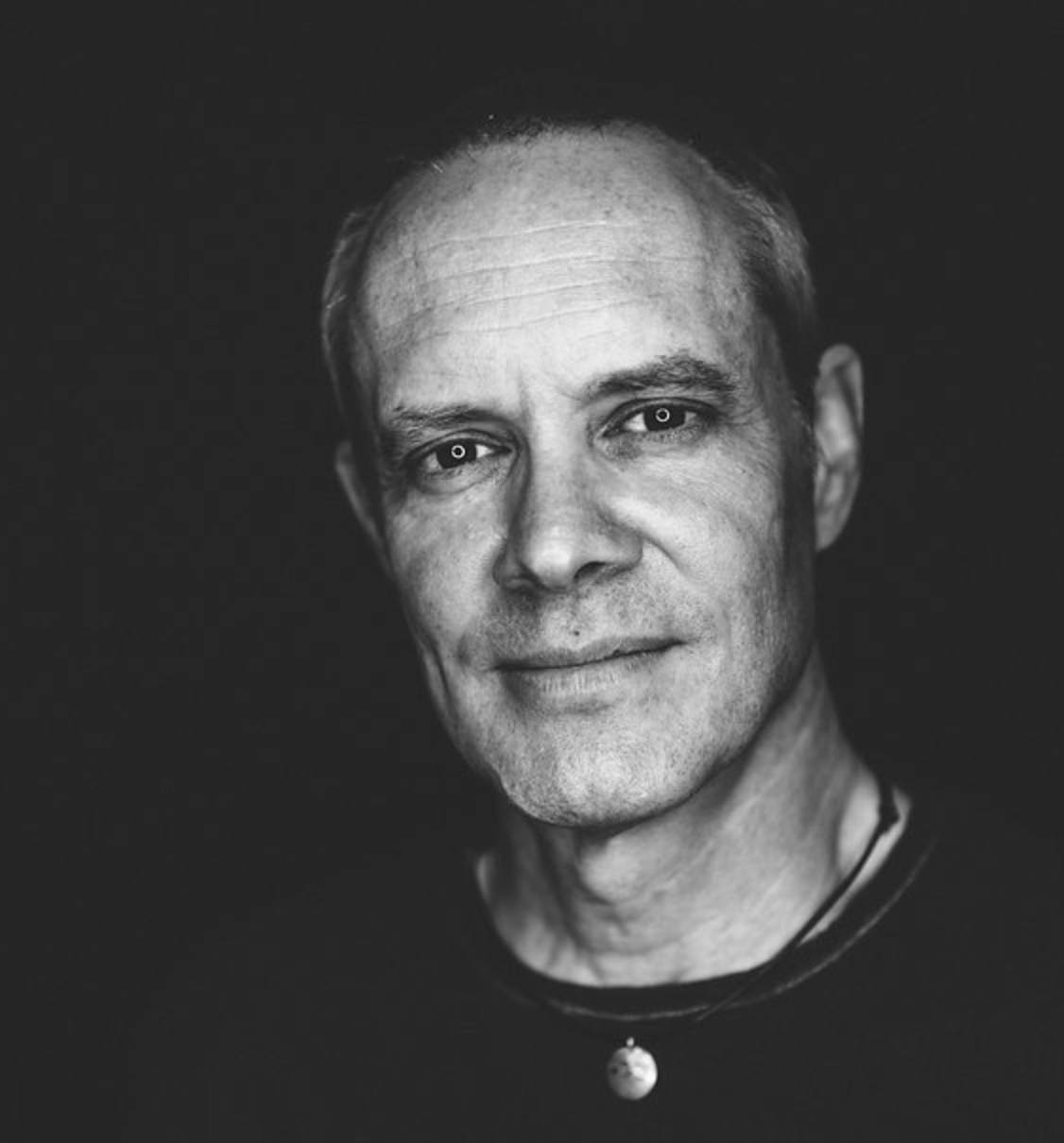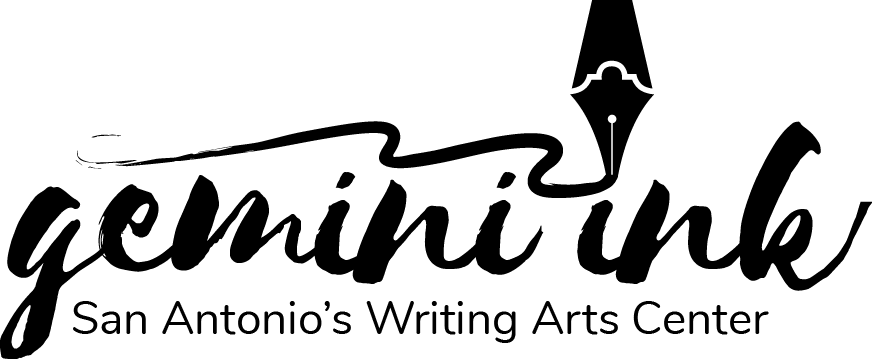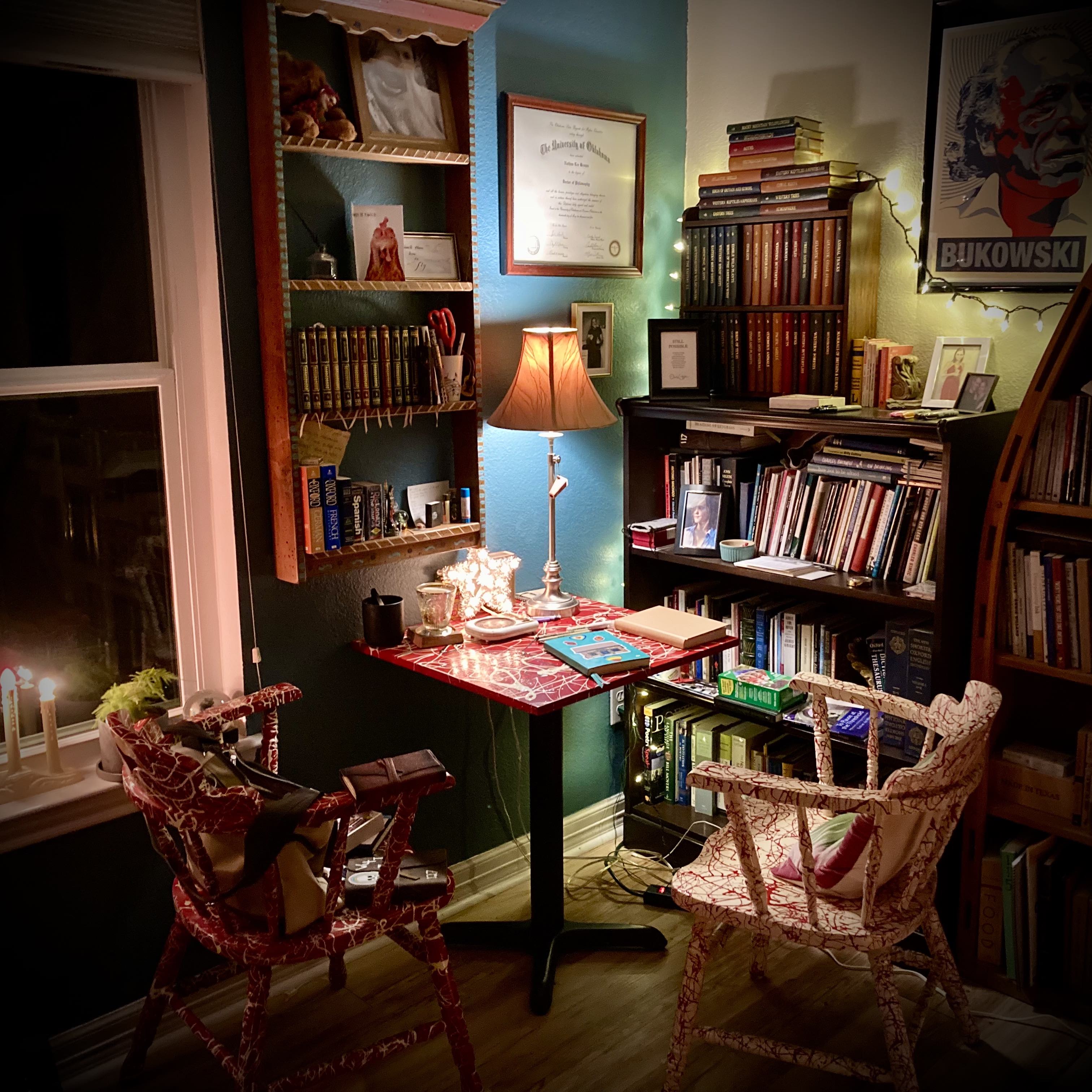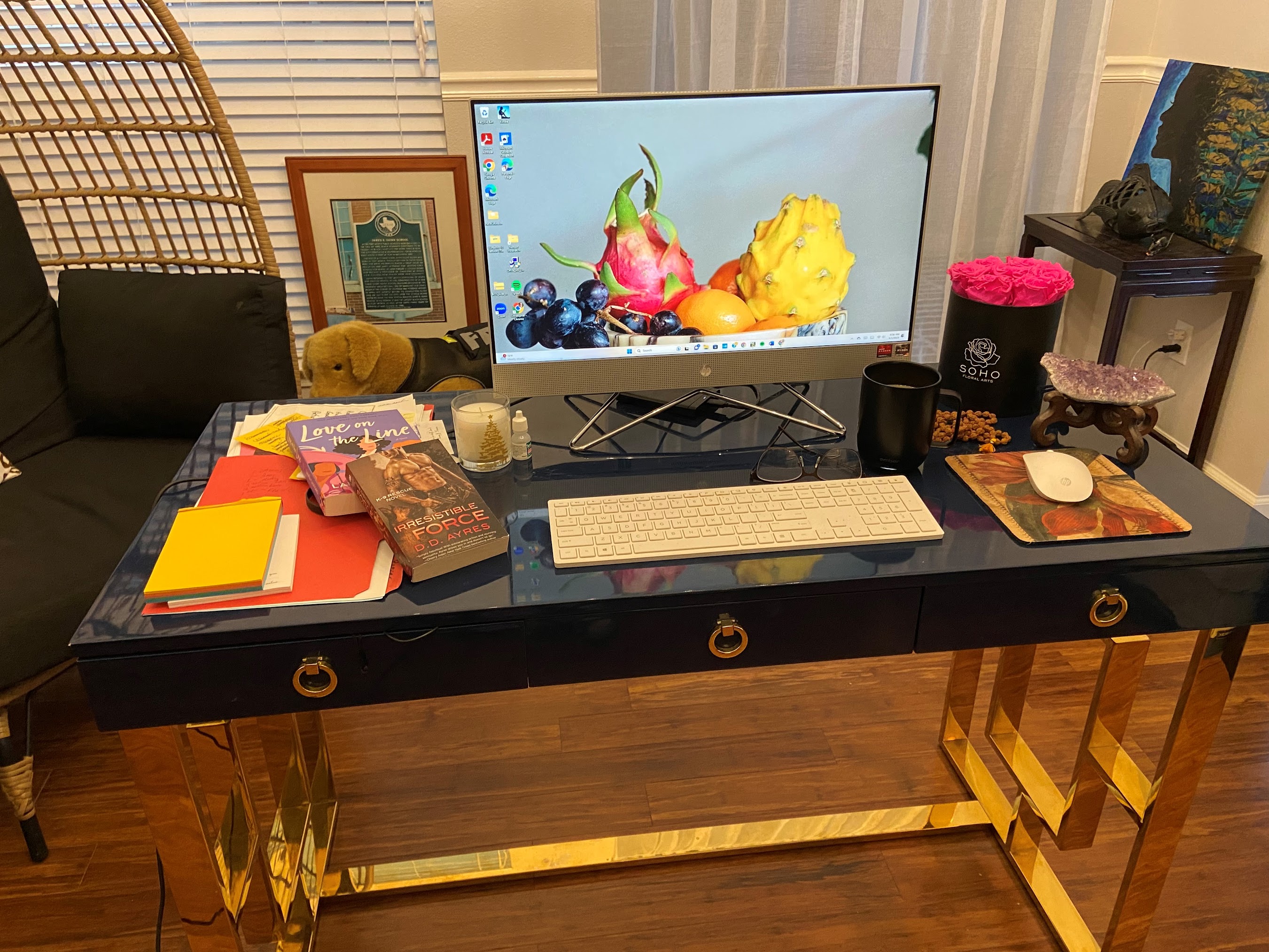The Writer’s Desk features the desks and writing practices of Gemini Ink faculty, visiting authors, teaching artists, volunteers, students, interns, staff, partners and more. Receive new posts in your inbox by subscribing to our newsletter at bit.ly/geminiinknewsletter.
Join Nathan Brown on Saturdays, July 1 & 8, 10am-1pm CST, Hybrid (in-person and online), for his workshop: How to Use Lists to Generate Endless Writing Ideas. In this open genre workshop, we will demystify the idea of “writer’s block,” explore techniques to maintain a sustainable daily writing practice, and discuss what works and doesn’t work for busy writers. This will be a generative workshop, so you will leave this workshop with plenty of ideas.
- Hi Nathan, thanks for taking the time to chat with us for the Writer’s Desk feature. Can we start with your preferred place to write? Has it changed over the years?
In the early stages—in other words, that time before you know you are, or are going to be, a writer—I wrote in coffee shops. Back when my hometown still had a Borders bookstore, I lived in that place and just about killed myself on mocha lattes and chocolate-covered coffee beans. As I got older, and more serious, I began to do more at home—if for no other reason than, I just couldn’t afford all those lattes and beans anymore.
I’m not sure exactly when it happened, but at some point, I began to take my “writing space” very seriously.
For instance, when a coffee shop in Houston that was dear to my heart, Mojo’s, went out of business, I actually went to their clearance sale, bought a Jackson Pollock-like set of splatter-painted table and chairs, a couple of their chipped mugs, and even a small bookshelf in the same Pollock style. I brought it all home and proceeded to “create a coffee shop” in a back bedroom of my house. Candles, framed photos of artistic heroes, bookshelves on every wall, etc. It was a bit crazy. But I still have it all and use it today. It’s a magical space that oozes creative energy.
- Do you have any habits or routines that you follow before writing?
Absolutely. I believe in ceremony and ritual—the words I would choose over habits or routines. I’m thoroughly convinced that ritualistic acts serve as psychological or subconscious triggers for the creative mind. It’s a way of tipping, or “tricking,” the mind into the mode of “Okay, it’s time to get to work.”
So, when I’m not on the road—where I still use coffee shops—I wake up in the morning, put on a poetry podcast, hand-pour a cup of coffee (the patience required is key to ceremony), cook an egg, maybe a pancake too, light a candle on my splatter table, then I put on classical or movie soundtrack music very quietly. I begin by reading a little prose on the craft of writing, followed, always, by some good poetry, and then I open a journal and begin writing, whether I know what I’m going to write about or not. The first version of everything I do is hand-written in a journal. Again, ceremony. I want to “feel” the words coming out of my hand. I’m not anti-technology. But I know for a fact that I write differently—and I think much better—when I write one letter at a time than when I type entire words in the same amount of time.
- What is the one piece of writing advice that you value most?
I have many. But my favorite has to do with “3 Laws” that my father, a great preacher, handed down to me. 1) Don’t ever assume that you’re interesting. (In other words, consideration of your audience is critical to your success as a communicator.) 2) There is nothing people appreciate more than brevity. (Enough said.) And 3) Land the Plane (Meaning, among other things, you must finish what you start. Get it done.) I know too many people who have been working on an “idea” for 20 years.
- What theme or symbol often emerges in your work? Why are you drawn to this theme/symbol?
Stones. I believe stones are animate—that they are an ancient civilization. And we do not pay enough attention to them. Nor do we honor their antediluvian wisdom as much as we should. I do “dry stacking,” which is a form of stonework that does not use any mortar. The stones must “find their place” and “lock in” to their spot. The Japanese and the Irish take this very seriously, among many other cultures. There are incredible traditions of it. And I’m pretty much a nut job when it comes to this.
- What are some misconceptions about being a writer that you can discredit?
The main one has to do with the success myth. Making it big (financially speaking) in the world of writing is extremely rare, to the point of being almost a myth. I bust my ass as a writer. I travel full-time, performing music and my written work. It is the “only” way I sell books. I make very little money, at least by capitalism’s crazy standards. And… I love what I do. It’s nerve-wracking at times, where long-term survival and finances, and health insurance, are concerned. But I wouldn’t trade it for anything. Read about the lives of the medieval bards sometime; it’s one good picture. I’ll put it this way: if you do not love it, and the sheer joy of the act itself, and the spiritual space one has to enter to do it, then you need to find something else.
- Does good writing result from best practices, magic, or a bit of both?
I believe it’s a mystical combination of both that almost no one—even the best writers—fully understands. On the magical end, I believe there’s a strange, unknowable quality of someone “having it” or not. And on the best practices end, I’ll come back to ceremony and ritual. I write every day. Every day. And have for over 25 years.
So, by way of ceremony and absolute commitment, I “show up” for work. That’s my way of staring the Muses square in their faces and saying, “Well, I’m here… so… what are you gonna do about it?” That way, if things don’t work out on any given day, and I write crap, I can say it was their fault.
I’m currently working on the second book in a travel memoir series called “A Vagabond at Large” (the subtitle of every book). The first book is called Just Another Honeymoon in France. And this next one will be about Tuscany. I’m having a blast working with prose for a change. And I’m realizing how invaluable my background in poetry is to writing nonfiction.
If people want to learn more about your work, where should they go? My website: www.brownlines.com, Facebook: https://www.facebook.com/chinacoman, and YouTube: https://www.youtube.com/channel/UCJ-nCXbSpVmibP0sozGJRzg

Nathan Brown is an author, songwriter, and award-winning poet living in Wimberley, Texas. He holds a PhD in English and Journalism from the University of Oklahoma, where he’s taught for over 20 years. He served as Poet Laureate for the State of Oklahoma in 2013-14, and now travels full-time performing readings, concerts, workshops, and speaking on creativity, poetry, and songwriting. Nathan has published over 20 books. Most recent are his new collection of poems, In the Days for Our Resilience, the fourth in a series now known as the Pandemic Poems Project, and a new travel memoir, Just Another Honeymoon in France: A Vagabond at Large. A previous collection, Karma Crisis: New and Selected Poems, was a finalist for the Paterson Poetry Prize and the Oklahoma Book Award. He’s written at least one poem a day for the last twenty-five years and says nothing has taught him more about writing.




